Our Verdict
The original Fitbit Versa was a success. It found the sweet spot between basic fitness trackers and advanced sports trackers and smartwatches that cost £300-plus, offering a combination of music, activity and basic sports tracking along with a great design and fashionable interchangeable straps that appealed to many. Given that the Versa 2 has improved a little on all those counts, you might expect it to be hailed as a similar success – but the landscape has changed since the Versa first came out, and there are now far more advanced watches available at the Versa 2’s price of £199.99. While the Versa 2 is a good tracker, there are better options available no matter what you want from your wearable.
For
- Improved design
- Battery life
- Accurate heart rate tracking
- Guided workouts available from Fitbit Coach
Against
- Screen brightness outdoors
- No built-in GPS
- Limited Spotify support
You can trust Coach
- NEWSFLASH: Amazon Prime Day Fitbit Deals Rated
Should I Consider Buying Something Else?
Yes. Although it’s a decent fitness watch, the Versa 2 lags well behind what is offered by the best fitness trackers, old and new. Its biggest rival is the Apple Watch Series 3 now that that watch has been surpassed by the Series 5 and reduced to £199.99. It’s a couple of years old, but the Series 3 has better hardware than the Versa 2, featuring built-in GPS and a more attractive screen and design, and it beats it on software too. It runs the most up-to-date Apple Watch operating system and the Apple App Store is on a completely different level to the meagre offering available for Fitbit smartwatches.
It’s not only the Apple Watch 3 that provides competition, however. Serious runners on a budget should get the cheaper Garmin Forerunner 45, and people who want better general sports tracking should consider the Polar Ignite (£174.50), which has guided workouts and brilliant sleep tracking all included in its price – no subscription required.
If you want music then the new Garmin Vivoactive 4 will link to Spotify Premium accounts to sync your playlists to the watch. It costs £239.99 or £259.99 depending on the size, and you might also be able to pick up a deal on the Garmin Vivoactive 3 Music, which has far better native sports tracking than the Versa 2 along with Spotify support.
Even if you’re dead set on a Fitbit to gain access to its excellent app, the Fitbit Ionic is available for just over £200 most of the time, and it has built-in GPS and a far better screen.
Fitbit Versa 2 In-Depth
Using The Fitbit Versa 2 To Track Activity
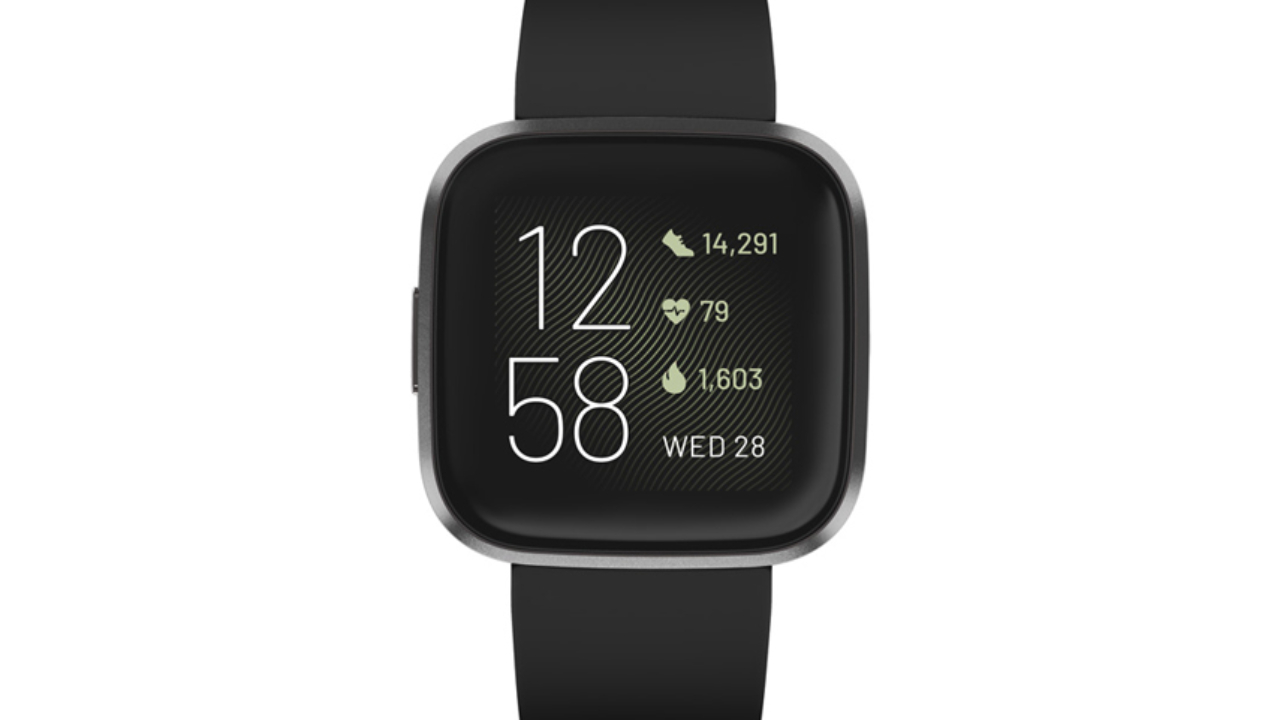
At the core of every Fitbit device is excellent everyday activity tracking. Your steps, calories burned, floors climbed, distance covered and active minutes are logged each day, with celebratory animations flashing up on the watch when you hit certain goals, which can be adjusted for each metric in the partner app.
Each hour you’re also nudged to complete at least 250 steps, to ensure you don’t stay sedentary for too long. This target is a little more demanding than the hourly move alert on the Apple Watch, which usually just requires around 100 steps from you to be satisfied.
All of the above is fairly standard on fitness trackers, but Fitbit’s software and massive popularity gives it an edge on rival devices. You can guarantee someone else you know has a Fitbit, so you can compete with them in steps, or even see who is the fastest to complete a special challenge in the app, like virtually walking around California’s Pohono Trail, which is equivalent to 62,500 steps.
There are also now groups in the Fitbit app related to interests like Heart Health, Hiking and Daily Activity, where you can post on a Facebook-style feed to show off your stats, encourage others, or share a particularly hilarious meme. It’s another way you can benefit from Fitbit’s massive community – the groups have over a million members – and find support and advice from people with similar fitness goals.
Using The Fitbit Versa 2 For Working Out
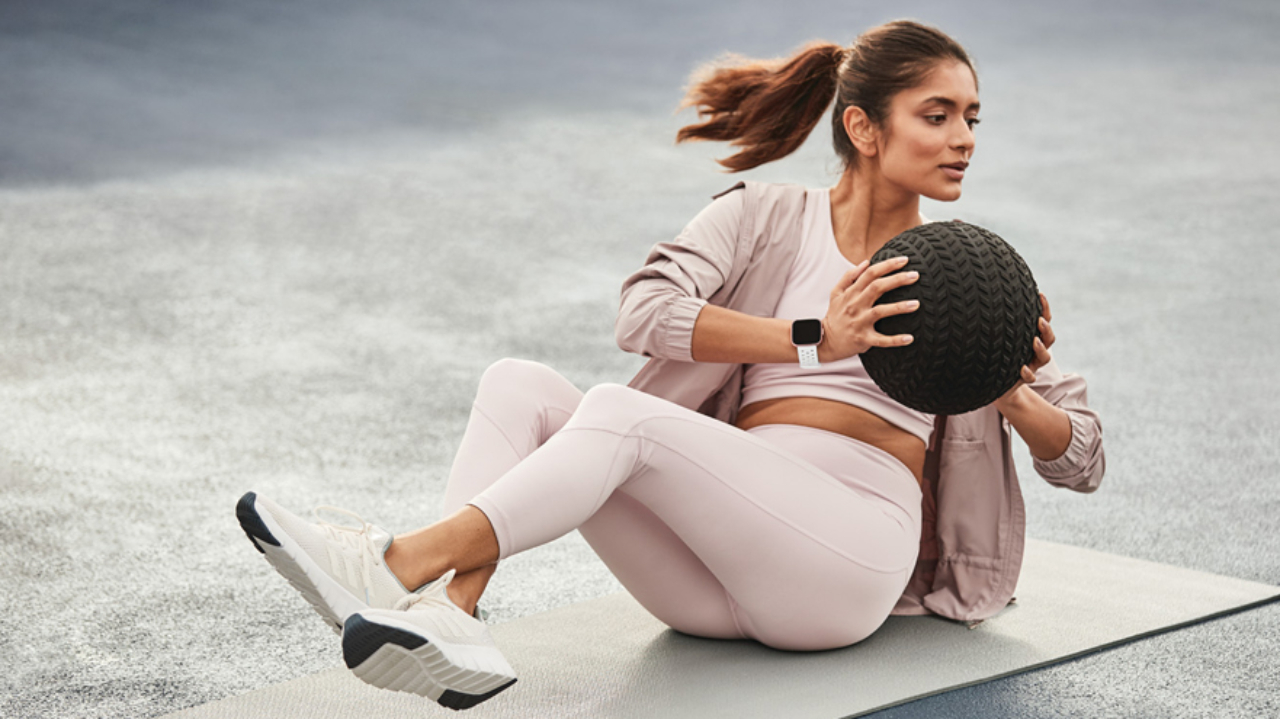
Fitbit currently offers 20 exercise modes, seven of which can be loaded onto the Versa 2 at any time using the Exercise Shortcuts section in the app. Of those modes there are several workout options, including “workout” for those who like to keep it pretty general. There is also an interval workout setting where you can set up your interval lengths, along with weights, bootcamp and circuit training modes, as well as individual modes for cardio machines like the elliptical and stair climber. There is no rowing mode, however – you’ll have to use the workout mode for that.
As on all trackers these modes differ only in name, showing the same stats, with duration, heart rate and calories burned being the key ones. Presumably different algorithms are working behind the scenes to make sure the calorie burn is precise when doing, say, circuit training compared with a bootcamp workout.
These basic workout modes are fine, but the guided workouts you can get on the Versa 2 are more useful. As well as Fitbit’s own Coach app, there are now apps from companies like TRX and Gold’s Gym that offer free workouts you can follow on the watch. There isn’t the vast range of apps you get on the Apple Watch, but sometimes having less choice can be good – you can find a workout quickly and get going.
If you want more workouts, a Fitbit Premium subscription will unlock lots more of them plus training plans in the app; there are other providers behind those workouts too, like Daily Burn and Yoga Studio.
Using The Fitbit Versa 2 For Running
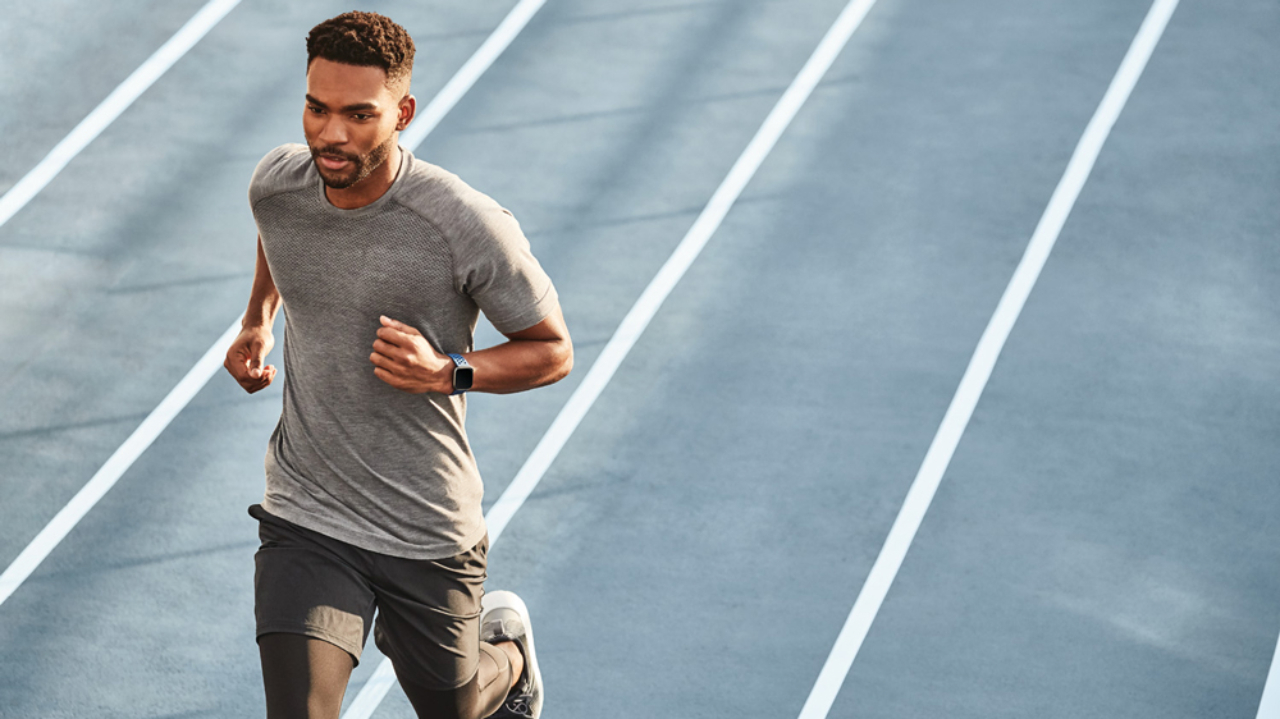
The Versa 2 doesn’t have its own GPS, but can connect to your smartphone to use its GPS during runs, which it will do at the start of your run. I found it took a surprisingly long time to connect to my phone for this before runs, though, to the point where I sometimes just gave up and ran using the Versa 2’s accelerometer to track distance instead of GPS.
Most people run with their phone, and I do most of the time, but to not have GPS in a £200 watch is pretty weak – there’s no other fitness watch at that price without built-in GPS. Also, when using my phone’s GPS the Versa 2 produced pretty inaccurate distance recordings, with excessive smoothing around corners that resulted in shortened total distances. The accelerometer was just as accurate, which is to say neither were as accurate as a watch with its own GPS built in.
The other factor that makes the Versa 2 a poor pick for runners is that the screen isn’t that bright and easy to read when you’re outside. That’s especially true of the always-on version of the screen, which shows your running stats but is so dim you can’t read them while on the move. Activating the full display nearly always took a press of the button on the Versa 2 as well, because the gesture-wake feature rarely worked for me, so to see my running stats I’d have to press a button and then squint at a dull screen. Far from ideal.
Runners are brilliantly served by a range of watches under the £200 mark, so if running is your main sport I’d definitely look elsewhere – the Garmin Forerunner 45, Coros Pace and Polar Ignite are all much better than the Versa 2 for running, and cheaper as well. If you’re looking for a general sports watch with music that can track the occasional run or treadmill session, then the Versa 2 is OK, but even then the lack of built-in GPS and dim screen make it frustrating to use – I’d prefer to have the Apple Watch Series 3 on my wrist for runs in that situation.
Using The Fitbit Versa 2 As A Smartwatch
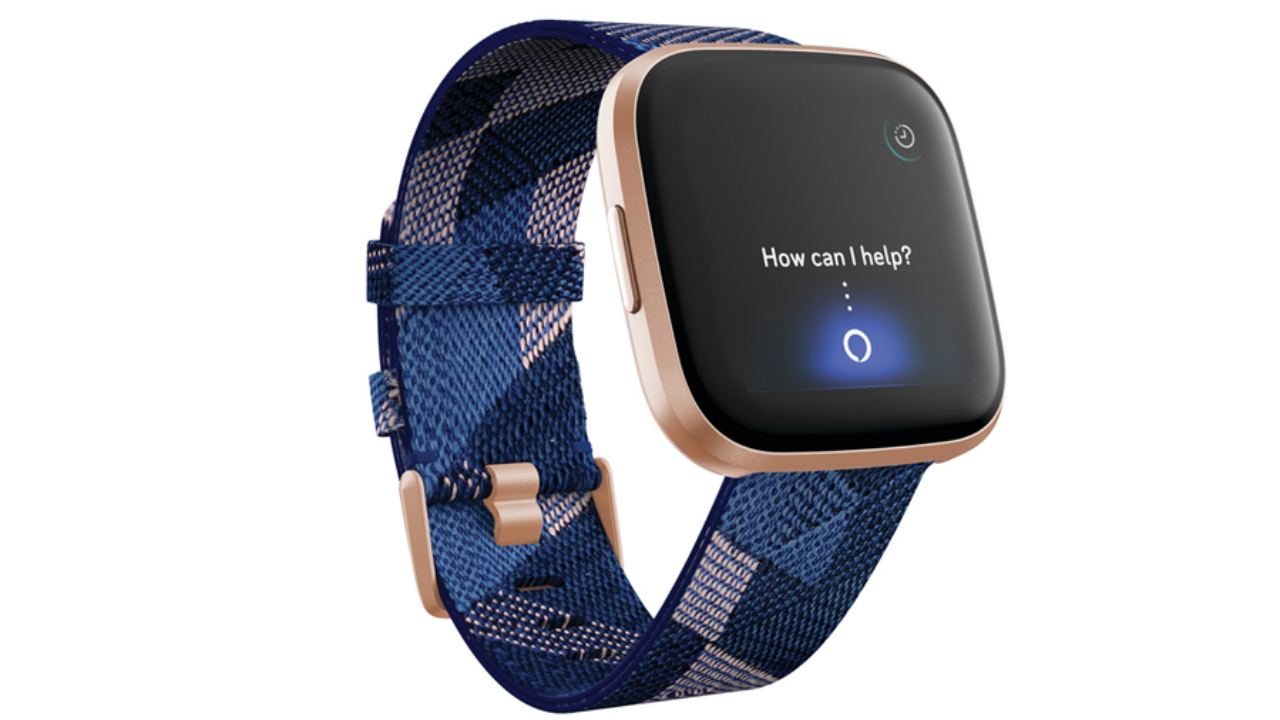
One of the major new features on the Versa 2 is Amazon’s Alexa voice assistant, and it (she?) has been integrated seamlessly. Press and hold the single button on the Versa and Alexa pops up, and the Versa 2 recognised any question I asked of it with barely a misstep – not easy, since I mumble and talk too quickly.
Alexa always responds with text for privacy reasons, which I appreciated. When comparing Alexa’s responses with Siri’s, I found that both were reliable in giving me the info I asked for quickly, including things like local store opening times and the weather. I’m not a big user of voice assistants, but Alexa is as good as any others I’ve tried.
Less impressive is the introduction of a Spotify app. The Versa 2 is restricted to controlling Spotify on your phone, rather than being able to link with your account over Wi-Fi to store your Spotify playlists and play from the watch independently. You can use the watch app to switch between playlists, but that’s the only advantage over the controls on any decent pair of headphones or the standard music remote control feature on Fitbit smartwatches which can control any music player on your phone. You also have to be a paid-up subscriber to Spotify Premium to access this unimpressive bonus. It’s a bit of a flop, especially since you can sync Spotify playlists across to many Garmin and Samsung smartwatches to stream offline. Deezer premium users can do this on the Versa 2, but that’s been available to Fitbit smartwatch owners since the launch of the original Versa.
A recent update to the Versa 2 has made it a little smarter in one regard: you can store a few watch faces on the device itself and swap between them without using the app, which you used to have to do. It’s a small but welcome change.
I’m also cautiously optimistic about the Fitbit app store, which now has more useful options than in the past, with a couple of workout apps standing out in particular. It’s still hopelessly barren compared with what you get with an Apple Watch or a device running Google’s Wear OS platform, but it’s better than the Garmin Connect IQ app store.
Fitbit Pay, on the other hand, has stalled as far as I can tell. Santander remains the only UK high street bank available and although there are workarounds (third-party apps like boon., which operates like a prepaid MasterCard), most people won’t be able to use NFC payments easily on the Versa 2 owing to the lack of partners.
Using The Fitbit Versa 2 For Sleep Tracking
Fitbit’s sleep tracking has always been a strong point, especially compared with the undercooked offering from Garmin and the non-existent tracking on the Apple Watch, and there is now more depth than ever before.
Each night you are given a simple sleep score out of 100, which is based on time asleep (which accounts for 50 points), deep and REM sleep (25 points) and restoration (25 points). The first two are self-explanatory, but restoration is more interesting: it’s based on sleeping heart rate compared with your overall resting heart rate, and how much you toss and turn at night.
It’s all useful information that’s easy to understand, and you get your sleep score and general info on the watch now, whereas in the past you had to use the Fitbit app. To my knowledge only Polar offer similarly comprehensive sleep tracking, and Fitbit manage to convey the information more clearly.
However, there are still accuracy problems. Sometimes the Versa missed the actual time I fell asleep and marked some periods awake in the middle of the night as light sleep. Also, one night I was up for so long in the middle of the night (I have a baby) that the Versa ended up dividing my sleep into two sections – not a big problem, except you need to sleep for three hours to get a sleep score, so one two-hour section of my night wasn’t given a rating and the other didn’t take into account the two hours’ sleep I did have in that first section.
These are quite small problems compared with the positives of Fitbit’s sleep tracking, which is certainly a big part of the Versa 2’s appeal, but it’s a part that’s going to cost you more. The restorative sleep feature requires a Fitbit Premium subscription. A three-month trial is included with your purchase but after that it’s £79.99 a year. The Versa 2 costs £200 – you shouldn’t have to shell out extra money to get access to much-publicised features like this. With the Polar Ignite, which is cheaper than the Versa 2, you get similarly in-depth sleep tracking and you don’t have to pay any extra.
How Often Am I Going To Have To Charge It?
If you’re exercising outdoors every day you’ll have to charge the Versa 2 every two or three days or so, assuming you have the always-on screen activated. You can get four days out of it if exercising less. That’s fairly good given that it has an always-on screen – the Apple Watch lasts just 18 hours – but you get the same from the new Garmin Venu and its always-on screen is brighter than the Versa 2’s, so you can read it easily when outside.
Turn the always-on screen off and you can get up to six days from the Versa 2, which also has a battery-saving mode that adjusts the settings to eke out more life from the watch if you’re running low on juice.
Where Can I Wear It Without People Laughing At Me?
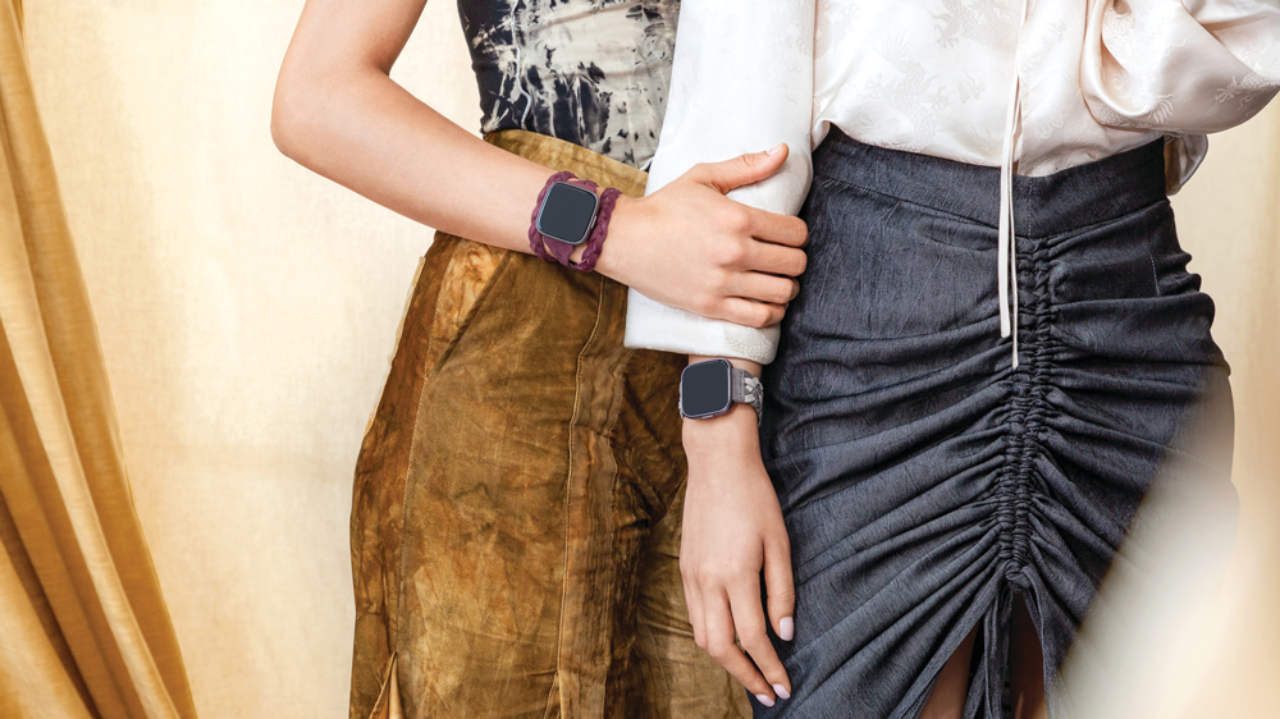
Pictured: Kim Shui for Fitbit Versa Collection, £49.99 each
You need have no concerns on this front, because the Versa 2 is a smart bit of kit. Fitbit has designed it to be sleeker and better-looking than the original Versa, partly by taking the word Fitbit off the front of it but also by reducing the size of the bezel around the screen. It looks great, and Fitbit maintain its reputation as the best brand for accessories by offering a range of straps and wraps (£24.99-£89.99) to pair with the watch to suit all styles.

Nick Harris-Fry is a journalist who has been covering health and fitness since 2015. Nick is an avid runner, covering 70-110km a week, which gives him ample opportunity to test a wide range of running shoes and running gear. He is also the chief tester for fitness trackers and running watches, treadmills and exercise bikes, and workout headphones.

